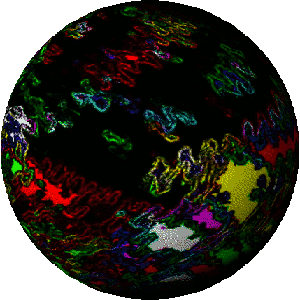How Black a Black Hole is?
The black hole could be seeing orbiting Vega in a broad lane entirely clear of debris; both inner and outer rings gave it wide berth. It was hard to believe how black it was.
As Elie took short video pans of the debris ring before her, she wondered whether it would someday form its own planetary system, the particles colliding, sticking, growing, ever larger, gravitational condensations taking place until at last only a few large worlds orbited the star.
The motion of the black hole around Vega was creating a visible ripple in the bands of debris immediately adjacent. She wondered if these gravitational perturbations, these spreading rarefactions and condensations would have any long-term consequence, changing the pattern of subsequent planetary formation.
It was very like the picture astronomers had of the origin of the planets around the Sun four and a half billion years ago. Elie could now make out inhomgeneites in the rings, places with a discernible bulge where some debris had apparently accreted together.
 |
| It is hard to believe how black is a Black Hole (quotations from Megan Jorgensen). Image: © Elena |
The sky was full of stars. Everywhere she looked there where stars, not the paltry scattering of a few thousand still occasionally known to naked-eye observers on Earth, but a vast multitude – many almost touching their nearest neighbors it seemed – surrounding Elie in every direction, many of them tinted yellow or blue or red, especially red. The sky was blazing with nearby suns.
She could make out an immense spiraling cloud of dust, an accretion disk apparently flowing into a black hole of staggering proportions, out of which flashes or radiation were coming like heat lightning on a summer’s night. If this was the center of the Galaxy, it would be bathed in synchrotron radiation.
No comments:
Post a Comment
You can leave you comment here. Thank you.